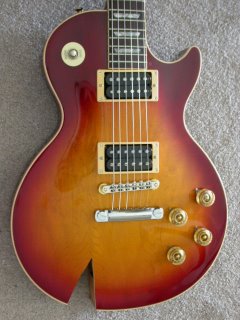
Gibson began production of the ES-140, like the one shown here on the left, in 1950, and likely had the design in development for some time before that. It had a 12 3/4" x 17 1/4" body, single cutaway, P-90 pickup, and was eventually made in 1 3/4" thickness. It was billed as a smaller version of the popular ES-175. Then, in 1952, the "radical" design of the Les Paul came onto the market, which consisted of the same 12 3/4" x 17 1/4" x 1 3/4" body, a single cutaway, and P-90 pickups. But for the addition of a second P-90, solid body, and the slight change in the sharpness of the cutaway, the instruments are incredibly similar. The attached picture shows an ES-140 (which appears taller because it is much lighter and doesn't sink into the carpet as far as the LP) and a Les Paul example. I don't have a 52 LP to use in the comparison, but it also had a tailpiece, like the ES-140, not the newer bridge of this example. I have searched a great deal of Gibson literature and can't find any other 50's guitars made in that size and configuration, so it wasn't used for the Les Paul because it was a common size for Gibson. Though thought to be revolutionary, the Les Paul design has always looked to me to be a lot like an upgraded, solid body ES-140. Though a rather obscure model not made in large numbers, the design team at Gibson would have certainly been aware of the ES-140 during design of the Les Paul, since it had been in production for a couple of years. I have not seen this issue discussed in any publications (and there are many) regarding the history of the Les Paul.




















































